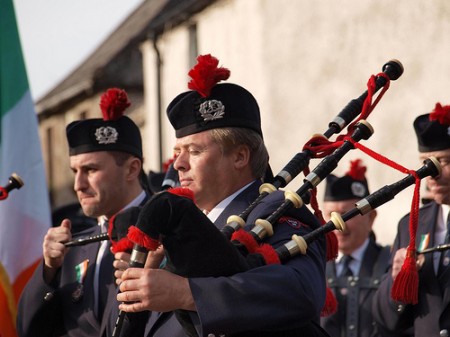
This week the heads of Northern Ireland’s leading parties sat together with UK Prime Minister Gordon Brown and Irish President Mary McAleese for an emergency meeting to save the country’s executive branch.
Officially, the issue at stake was the planned shift of power over the control of the police and judicial institutions from British to Northern Irish authorities. However, the Democratic Unionist Party (DUP) and Sinn Féin (SF) could not come to terms. On the one hand, there is the apparent issue of power sharing (which we’re covering in an upcoming weekly theme by the way). On the other hand, a main reason for dispute is parading.
The DUP is seeking the dissolution of the National Parades Commission, which it says discriminates against DUP members by constraining their ability to parade. It also refers to the issue as one of “community confidence” – something which SF does not agree with.
When people think of a parade, there is usually not much controversy involved. But apart from the merry festivities they can be, parades are also a power symbol. A big group marching through a city center, dressed up in uniforms in their respective colors and playing loud music will certainly raise attention. But moreover it insinuates, “This is our territory, we belong here.”
The fact that this issue needs debate shows that unification processes in Northern Ireland have not yet consolidated. People’s sense of belonging to and identifying with a specific group or party still persists. Thus it is only a small step from parading to politics. Power-sharing is a useful tool to incorporate all rivaling parties into the executive branch and thus provide them all with a share of political control. But this will not resolve cultural issues.
“Community confidence” is a misleading phrase if it is only applied to a subgroup or part of the population. Of course, communities on a sublevel are important too. But if the Northern Irish government wants to do any good for its people, it should strive to foster community confidence irrespective of party cleavages.

